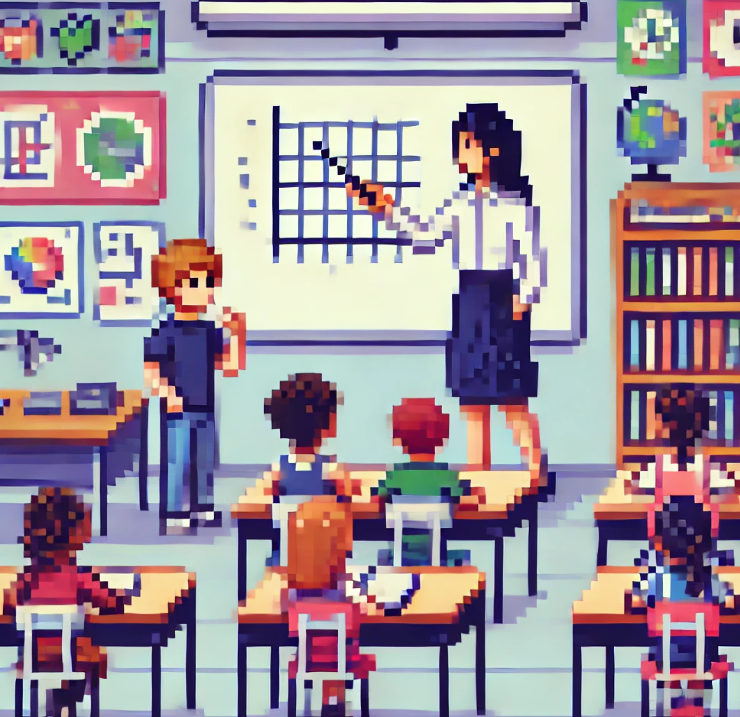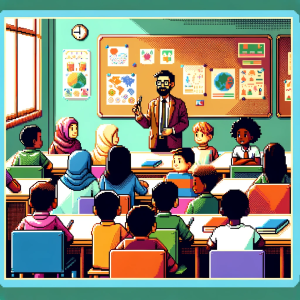
Teacher-Paraprofessional Partnerships Matter
When was the last time you thought about the unsung heroes in your child’s classroom? While teachers often take the spotlight, paraprofessionals—commonly referred to as teacher assistants or aides—work tirelessly behind the scenes to support students, particularly those with disabilities. But what happens when the collaboration between these two roles falters? The answer could significantly impact student success.
A recent study sheds light on the complex dynamics between teachers and paraprofessionals, revealing key factors that influence these relationships and their implications for student mental health and academic outcomes.
The Hidden Power of Teacher-Paraprofessional Partnerships
Imagine a teacher and a paraprofessional as co-pilots in a cockpit. When their communication is strong, the classroom soars—students feel supported, and learning thrives. But when turbulence arises—due to unclear roles, lack of training, or misaligned expectations—the flight can become bumpy.
This study surveyed 149 certified teachers across 59 schools to explore their relationships with paraprofessionals. The findings? Teachers rated these relationships as generally positive but noted significant variations depending on their experience, school socioeconomic status, and personal characteristics such as race and ethnicity. These nuances reveal critical opportunities for growth that could benefit students and schools alike.
Key Findings That Matter for Schools and Students
1. Experience Breeds Confidence
Teachers with over ten years of experience reported higher-quality relationships with their paraprofessionals compared to those new to the field. Why? Experience likely builds the communication and supervisory skills necessary for effective teamwork.
However, newer teachers often feel overwhelmed. Many enter classrooms with minimal training on how to collaborate with paraprofessionals. Imagine being a recent college graduate, suddenly tasked with managing not only students but also another adult—without a guidebook. This lack of preparation underscores the need for preservice training that includes supervision and collaboration skills.
2. The Role of Socioeconomic Factors
In schools with a higher percentage of students from low-income families (measured by eligibility for free and reduced lunch), teachers reported lower-quality relationships with paraprofessionals. These schools often face resource constraints, higher teacher burnout, and greater student behavioral challenges—all of which strain professional relationships.
3. Cultural and Racial Influences
Teachers’ racial and ethnic backgrounds also influenced relationship quality. Latinx teachers, for instance, reported lower ratings of trust and collaboration with their paraprofessionals compared to their White colleagues. This finding aligns with broader research highlighting systemic challenges faced by teachers of color, including feelings of marginalization and the need to “prove” themselves in predominantly White school environments.
What This Means for Students
Strong teacher-paraprofessional relationships ripple outward, affecting everything from classroom management to individual student support. When these partnerships thrive:
- Students with disabilities receive better, more consistent support.
- Teachers and paraprofessionals model collaboration, fostering a positive learning environment.
- Behavioral issues are addressed more effectively, reducing stress for students and staff.
Conversely, when these relationships are strained, the classroom can become a battleground of miscommunication and unmet needs, leaving students—particularly those most vulnerable—caught in the crossfire.
Practical Solutions: Bridging the Gap
To strengthen these essential partnerships, schools and districts must invest in systemic changes:
1. Train Teachers to Lead Effectively
Most teachers receive little to no training on supervising paraprofessionals. Incorporating this into teacher preparation programs and ongoing professional development is a crucial first step. Workshops, role-playing scenarios, and mentorship programs can help teachers develop the skills needed to guide and collaborate with their paraprofessionals effectively.
2. Clarify Roles and Expectations
Many paraprofessionals report role confusion, particularly in inclusive classrooms where their responsibilities can range from administrative tasks to direct student instruction. Schools should provide clear job descriptions and ensure that teachers and paraprofessionals have regular planning time to align on goals and strategies.
3. Address Cultural Competency
As schools become more diverse, cultural humility must become a cornerstone of professional development. Facilitating conversations about bias, values, and communication styles can help build trust between teachers and paraprofessionals, particularly when cultural differences exist.
4. Support High-Poverty Schools
Schools serving low-income communities need additional resources—both material and emotional. Providing structured support systems, such as dedicated time for teacher-paraprofessional collaboration and access to mental health resources for staff, can help alleviate some of the stressors unique to these environments.
A Call to Action
The teacher-paraprofessional relationship is more than a professional partnership; it’s a foundation for student success. By investing in these connections, schools can create classrooms where every student feels seen, supported, and ready to learn.
So, what steps will your school take to support these critical relationships? If you’re a teacher, how might you reflect on your own partnership with your paraprofessional? Share your thoughts and ideas in the comments below. Together, we can build stronger, more inclusive classrooms for all.



